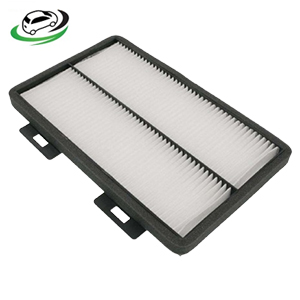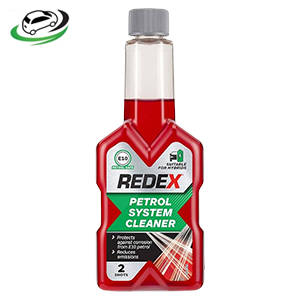-6%
Get Mazda CX-5 Front hub bearing KD35-33-04XC in Kenya
The front hub bearing is a critical component in a vehicle’s wheel assembly, responsible for facilitating smooth wheel rotation while supporting the vehicle’s weight and ensuring stable, efficient performance. This guide will explore its structure, functions, importance, signs of wear, causes of failure, maintenance, and replacement considerations.
1. Overview and Structure of the Front Hub Bearing
The front hub bearing, typically part of a wheel hub assembly, is located at the center of the wheel hub, which connects the wheel to the axle. It consists of a steel ring housing a set of steel ball bearings or roller bearings encased in a tough steel housing. This assembly enables the wheel to rotate with minimal friction, and it is typically pre-greased and sealed to protect against dust and contaminants.
Common configurations of front hub bearings include:
- Ball Bearings: Generally used for lighter vehicles, they allow the wheel to rotate freely in all directions and can handle both radial and axial loads.
- Roller Bearings: Common in heavy-duty vehicles, these bearings handle heavier radial loads but are often less flexible with axial movements.
- Tapered Roller Bearings: Widely used in cars and trucks, tapered roller bearings handle both radial and axial loads efficiently, providing durability and stability.
Front hub bearings can be either part of a single, sealed hub assembly or as individual components. Most modern vehicles use a sealed hub assembly to reduce maintenance needs.
2. Functions of the Front Hub Bearing
The front hub bearing performs several critical functions:
- Supports the Vehicle’s Weight: The front hub bearing bears the load of the vehicle’s weight, ensuring even distribution for stable driving.
- Reduces Friction for Smooth Rotation: By facilitating wheel rotation with minimal friction, it enhances the wheel’s ability to rotate freely.
- Maintains Wheel Alignment: It helps maintain wheel alignment, preventing excessive tire wear and enhancing vehicle control.
- Enhances Steering Precision: The front hub bearing provides stability to the wheel assembly, which in turn improves steering response and handling.
- Absorbs Shocks and Road Vibrations: Its role in the suspension system enables it to absorb minor shocks and road vibrations, adding to overall driving comfort.
3. Importance of the Front Hub Bearing
The front hub bearing is essential for several reasons:
- Driving Safety: A well-functioning hub bearing ensures that wheels are stable and secure, reducing the risk of accidents due to wobbling or misalignment.
- Enhanced Performance: A properly functioning bearing enables efficient wheel rotation, which translates to smooth and stable driving.
- Fuel Efficiency: Reduced friction within the bearing assembly lowers the amount of energy required to rotate the wheels, positively impacting fuel consumption.
- Prevents Excessive Tire Wear: A good hub bearing maintains proper wheel alignment, preventing uneven tire wear and helping extend tire life.
- Vibration and Noise Reduction: A healthy bearing minimizes road vibrations and noise, contributing to a quieter, more comfortable ride.
4. Signs of a Faulty Front Hub Bearing
Identifying when a front hub bearing needs attention is crucial to avoid potential safety issues. Some common signs of a worn or damaged hub bearing include:
- Humming or Growling Noise: One of the most common symptoms is a loud humming, growling, or rumbling noise that intensifies with speed or when turning. This noise indicates wear or damage to the bearings.
- Excessive Vibration or Wobbling in the Steering Wheel: If you feel vibrations or notice the steering wheel shaking, especially at higher speeds, it could be due to a faulty hub bearing.
- Uneven or Rapid Tire Wear: A damaged front hub bearing can cause improper wheel alignment, leading to uneven or rapid tire wear.
- Play or Looseness in the Wheel: When the bearing is worn out, there may be noticeable play or looseness in the wheel assembly, affecting handling and stability.
- Pulling to One Side While Braking: A faulty bearing may cause the vehicle to pull to one side while braking, which is a potential safety risk.
- ABS Malfunction Warning: In many vehicles, the ABS sensor is integrated into the hub bearing assembly. A failing bearing could trigger an ABS warning light on the dashboard due to improper sensor readings.
5. Causes of Front Hub Bearing Failure
Several factors can lead to premature wear or damage to the front hub bearing, including:
- Poor Road Conditions: Rough roads, potholes, and speed bumps can stress the bearings, causing premature wear and damage.
- Contamination: Dirt, water, and debris can infiltrate the bearing if the seal is damaged, leading to corrosion and increased friction.
- Improper Installation: If a bearing is not installed correctly or is over-torqued, it may result in misalignment and accelerated wear.
- Low-Quality Bearings: Using low-quality, non-OEM bearings can compromise durability and performance, leading to a shorter lifespan.
- Extreme Driving Conditions: Heavy loads, high speeds, or aggressive driving can place extra stress on the bearing, leading to faster wear.
- Lack of Lubrication: Bearings rely on grease for smooth rotation, and any loss of lubrication due to a worn seal or excessive friction will accelerate wear.
6. Maintenance and Care Tips
Taking preventive steps can prolong the life of a front hub bearing and reduce the risk of unexpected failure. Here are some essential maintenance tips:
- Inspect Regularly: Routine inspections, especially during tire rotations or alignments, help catch wear signs early.
- Avoid Overloading the Vehicle: Carrying excessive weight or overloading the front axle can strain the hub bearing, causing it to wear out faster.
- Drive Cautiously on Rough Roads: Avoiding potholes and reducing speed over bumps can protect the hub bearing from impacts.
- Ensure Proper Installation: When replacing a front hub bearing, it’s crucial to follow manufacturer specifications to prevent misalignment.
- Check for Wheel Alignment and Balance: Misalignment and unbalanced wheels put undue stress on the hub bearings, so regular checks can help maintain their condition.
- Avoid Pressure Washing Near Bearings: High-pressure washing near the wheel assembly can force water past the bearing seals, leading to contamination and wear.
7. Replacement Considerations
When a front hub bearing shows signs of failure, replacement is essential for safe and stable driving. Here are some points to consider:
- Replace Both Sides if Needed: While it’s not always necessary to replace both front hub bearings, it’s a good idea if one side shows significant wear. The other side is likely to follow soon due to similar wear patterns.
- Use High-Quality or OEM Parts: Using OEM or high-quality aftermarket parts ensures compatibility, reliability, and longevity.
- Professional Installation Recommended: The front hub bearing replacement process can be complex, often requiring specialized tools and precise torque application, so professional installation is advisable.
- Perform Wheel Alignment After Replacement: Replacing a front hub bearing may slightly alter wheel alignment, so a post-replacement alignment check is beneficial for maintaining handling and tire wear.
- Check Associated Components: During replacement, inspect surrounding components like the tie rods, ball joints, and suspension bushings. Replacing these parts as needed can improve the performance of the new bearing.
8. Cost and Long-Term Value
Replacing a front hub bearing involves some costs, which vary based on the vehicle make, model, and labor expenses. However, the investment pays off by maintaining vehicle safety, stability, and comfort. Additionally, timely replacement of a failing bearing prevents further damage to the suspension and steering components, saving potential repair costs in the long run.
9. Conclusion
The front hub bearing is integral to the wheel assembly, impacting everything from driving stability and safety to fuel efficiency and tire wear. Recognizing the symptoms of a failing bearing and addressing it promptly through maintenance or replacement can keep your vehicle performing at its best. By following best practices for installation and maintenance, you can maximize the lifespan of the front hub bearing, ensuring smoother, safer, and more efficient driving for miles to come.
Follow us on Facebook for more parts.



